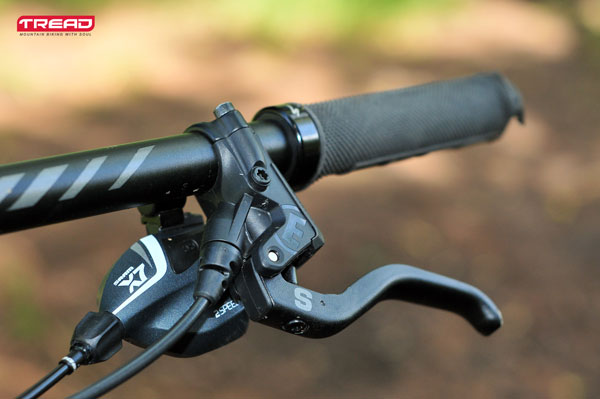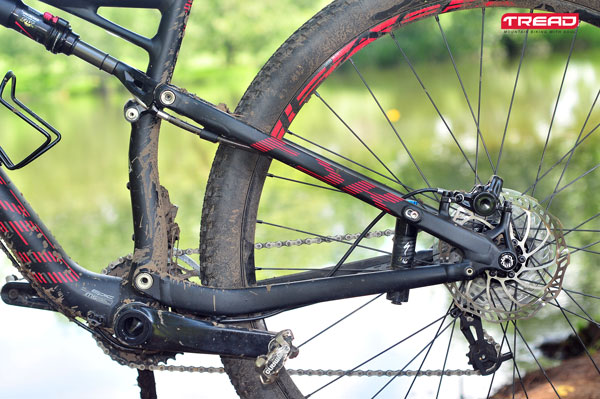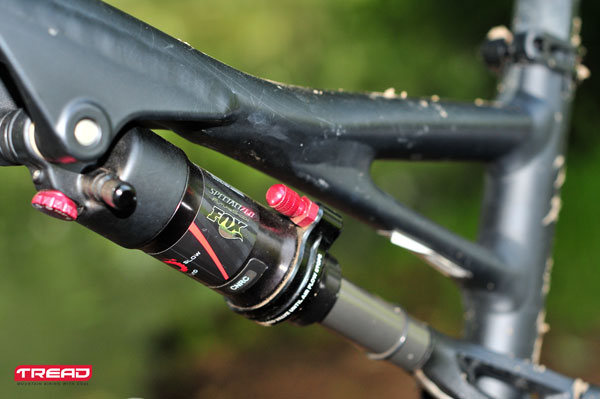A total of 30% of the participants at the 2014 ABSA Cape Epic were on Specialized bikes. We’re prepared to bet that 99% of those were the American company’s racing-tuned Epic model, largely the full-carbon versions, which cost at least R70 000. One model in the range does come in aluminium though. And it does sell for less than R40 000. But is the Epic Comp stage-race worthy?
– Photos: Dino Lloyd

THE BIKE
These days it’s rare to find a bicycle model in more than one colour. Two colours is occasionally the case, but three is virtually unheard of. Well, the Epic Comp comes in three colour options Satin Black/Red/Charcoal, Gloss/Satin White, Satin Black/White/Hyper. That’s quite a commitment from Specialized! Our test model came in the racy looking Satin Black/Red/Charcoal, which is sure to be a popular choice. The attention to welds and finishing detail on the Comp are exceptional, giving it the look of a far more expensive bike. In fact quite a few remarked how it was difficult to distinguish it from a carbon frame at a glance. Unfortunately though, the satin finish paint job is prone to scuffing. Something we found on bike rack clamps, although some rags and a bit of bike polish helped alleviate this.
The Epic Comp shares race-orientated geometry with its more pricey carbon brothers – 70.5-degree headtube and 73.75-degree seattube. Something that stood out, was that the frame can hold two full-sized water bottles, a key feature if you’re doing ultra marathons, stage races or not a fan of riding with a hydration pack. Additionally like its more expensive siblings the Comp can accommodate Specialized’s SWAT system, a smart spares storage system integrated into normally empty spaces on the bike (not standard with the Comp).
A RockShox Reba fork upfront is mated to Fox’s Specialized-tuned Brain system. We liked this combo and found it worked well, also saving maintenance costs as the Brain system is very specific with servicing and Specialized offers this with a quick turnaround time guaranteed.
The Epic Comp has a solid mix of SRAM X9 with X7 shifters, accompanied by some custom SRAM parts making up a 2×10 drivetrain. This sits between Shimano’s XT and SLX. We found it to be a clean, robust combination, although with the triggers we did miss the forefinger actuation that Shimano’s trigger shifters allow. That said, shifting didn’t miss a beat, even after some properly muddy rides. The brakes are Magura’s MTS which adds something a bit different and performed really well with plenty of modulation. Everything else came from Specialized’s in house component range from bars to saddle to Roval wheels.

THE RIDE
On the trail, it was quickly apparent that the Epic Comp is a high-performance bike that demands to be ridden fast from the first pedal stroke. And it makes sense. Specialized makes no bones about the fact that it has different ‘ride experiences’. If you want trail-feel, go for a Stumpjumper. If you want a race-feel, the Epic range is your target.
What does race-feel feel like? Well the Epic Comp delivered exactly that – climbs swiftly (the double chainring makes it ideal for all rider strengths), corners with stability (if you’re able to get your body position just right) and descends with a high level of sureness (if you’re a confident bike handler). All supported by the Brain suspension’s action, which was hard to fault. We did find the ‘thunk’ feel/sound from the rear shock a bit unsettling, but got used to it and almost came to expect it at times (it’s a sound/feel when inertia activates the rear shock).
Speaking of suspension, don’t expect plush. It’s not hard per se, but there’s ample trail feedback, which our fit testers love. But it’s trail feedback, not flow-interrupting bounce… There’s an important difference when speed matters. It has to be said that the automatic suspension setting delivered by the Brain shock is quite cool. One less thing to worry about which, when you’re on the vomit limit, is always welcome…
For riders that are committed to racing, have a high level of fitness and have an above average skill level, the Epic Comp is your kind of bike. For riders that are a little on the heavy side, are relatively unfit, or who lack confidence on tricky terrain, rather look to the Camber for the comfort and forgiveness that model offers.
The Epic Comp looks and feels like a race bike. It was also the most difficult bike rotate among our testers. A whole lot of new excuses were created when it came time to pass the bike on to the next tester.

THE VERDICT
We can’t all afford a top-end Specialized Epic. But we don’t all need to. The Epic Comp offers an impressive package in terms of weight, feel, geometry, suspension, spec and price. If you’re a committed racer, or want to be one, but are on a budget limit, then the Epic Comp was made for you.

GEOMETRY:
SIZES: XS, S, M (tested), L
TOP TUBE LENGTH: 557mm
SEAT TUBE LENGTH: 434mm
HEAD TUBE ANGLE: 70.5 degrees
SEAT TUBE ANGLE: 73.75 degrees
CHAINSTAY LENGTH: 448mm
WHEELBASE: 1112mm
SPECS:
PRICE: R36 500
COLOURS: Satin Black/Red/Charcoal, Gloss/Satin White, Satin Black/White/Hyper
FRAME: M5 alloy frame and swingarm
WEIGHT: 12.27Kg (Tubeless with pedals)
FORK: Rock Shox Reba RL, 100mm travel, 15mm thru-axle
SHOCK: FOX/Specialized remote Mini-Brain (100mm travel)
SHIFTERS: SRAM X7 Trigger
FRONT DERAILLER: Custom SRAM direct mount (2×10)
REAR DERAILLER: SRAM X9 Type 2
CRANKSET: Custom SRAM Alloy (36/22)
BRAKESET: Magura MTS, hydraulic disc with 160mm rotors
WHEELS: Rims – Roval 29, alloy, 21mm inner width, 32h, Hubs – Specialized Hi Lo disc, sealed cartridge bearings, DT Swiss Stainless spokes
TYRES: Front – S-Works Fast Trak Control, 120TPI 29×2.2, Rear – Specialized Fast Trak Control, 60TPI, 29×2.0
OTHERS: Specialized flat, 8-degree backsweep 700mm wide handlebars, Specialized, forged alloy, 6-degree rise stem, Specialized alloy, single bolt, 27.2mm Seatpost, Body Geometry Phenom Comp, hollow Cr-Mo rails
CONTACT: www.specialized.com; 021 808 7333
TREAD Magazine is sold throughout South Africa and can be found in: Spar, CNA, Exclusive Books, Discerning bike shops and on Zinio
*Originally published in TREAD Issue 33, 2015 – All rights reserved



